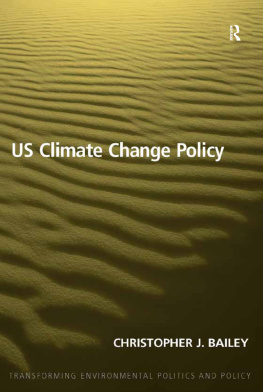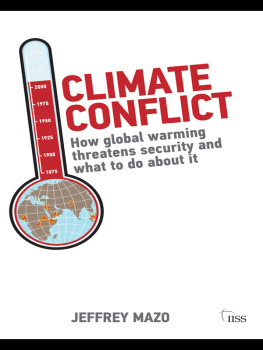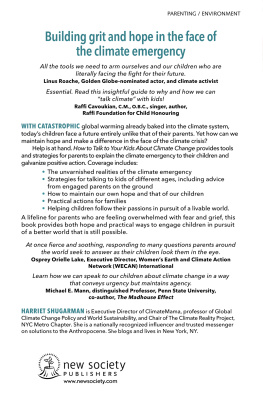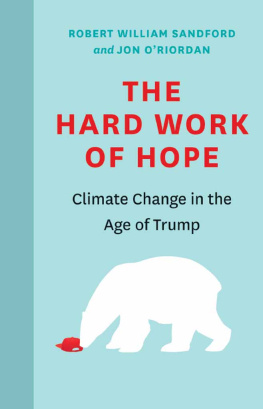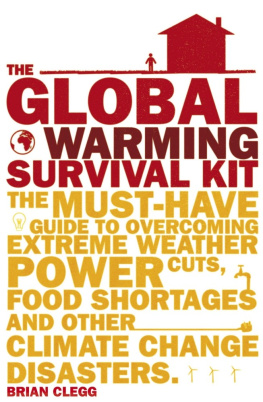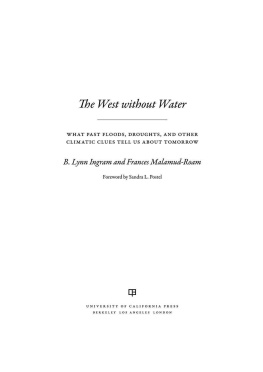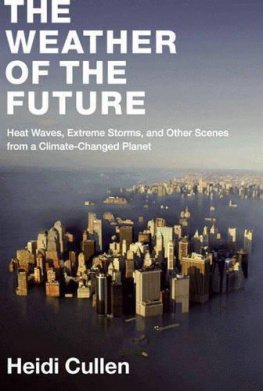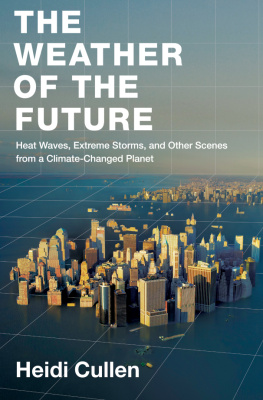THE
HAND BOOK
SURVIVING
AND LIVING
WITH CLIMATE
CHANGE
The Handbook
Surviving and Living with Climate Change
JANE RAWSON &
JAMES WHITMORE
FOREWORD BY
CLIVE HAMILTON


MELBOURNE, AUSTRALIA
www.transitlounge.com.au
Copyright 2015 Jane Rawson and James Whitmore
First Published 2015
Transit Lounge Publishing
This book is copyright. Apart from any fair dealing for the purpose of private study, research, criticism or review, as permitted under the Copyright Act, no part may be reproduced by any process without written permission. Inquiries should be made to the publisher.
Cover and book design: Peter Lo
Printed in Australia by McPhersons Printing Group
A cataloguing-in-publication entry is available from the
National Library of Australia: http://catalogue.nla.gov.au
ISBN: 978-1-921924-97-2
CONTENTS
WHERE SHOULD I LIVE?
Where should you live when the climate changes? It seems pretty simple on the face of it: choose somewhere the temperature wont get much hotter than youre currently used to, where rainfall wont be too erratic and where you wont be under water. Oh, or on fire. Easy, right? Just flip ahead to the What will happen when and where? chapter and figure out a place to move. Tasmania, probably. Or maybe northern New South Wales, if you dont mind rain. Or Canada, perhaps. Sweden? Siberia? New Zealand!
This book was inspired by that very question, Where should I live?. After the release of the IPCCs fifth report, in late 2013, Professor Jean Palutikof, Director of the National Climate Change Adaptation Research Facility, was interviewed on ABC Radio Nationals Drive program. She was talking about the effects a worsening climate would likely have on Australia. So where should I move? host Waleed Aly jokingly asked her. Shed clearly been considering the matter for months, probably years. As an expert in climate adaptation, she must think about how to get through climate change a lot more often than the average person.
A developed country, she told him, definitely not in the tropics. Probably Scandinavia or Canada: places where agriculture is limited now by temperature because its too cold. A bit of warming will help in those places. If it had to be Australia, Tasmania, she supposed.
That made us think, we know a lot of climate scientists and they know a lot about where Australia is headed are they planning to stay put? It turned out they werent. Some had bought property in Tasmania. Others had already planned their move to the far northern hemisphere. We asked around, Given what you know, where would you go? Some of those answers are featured in this chapter.
If weather and sea level rise were all you had to worry about, the answer would be relatively simple. Find somewhere near the poles, well above the ocean, with a good supply of fresh water and where flooding and fire arent a problem.
But that isnt all you have to worry about, because living with climate change isnt just about worsening or unpredictable weather. Its about society, and about how society will react to that worsening and unpredictable weather. Its about all kinds of complex inputs into agriculture, and how our food gets around. Its about whether youre the kind of person who does best by yourself or among others. Its about whether youre prepared to jettison a whole life friends, family, job, your favourite bar that youre probably very attached to and launch into something altogether different.
We dont know all the answers. But we have thought of a lot of questions that mightnt have crossed your mind yet and asked a lot of people about their opinions. The results are below.
CASE STUDY: WHERE WOULD SOPHIE LEWIS LIVE?
Dr. Sophie Lewis is a Research Fellow at the Research School of Earth Sciences, ANU, as part of the ARC Centre of Excellence for Climate System Science. She loves living in Canberra and doesnt mind at all having moved there from Melbourne.
If I could move anywhere it would probably be to the South Island of New Zealand. The impacts of climate change that they are likely to see over my lifetime would probably be fairly easy to cope with, such as decreases in frosts and higher snow lines. The increased frequency of hot temperatures would also be manageable, given the average temperatures there are lower than in Australia.
But there are other factors to consider when moving than just the weather friends, family, social ties so within Australia I would probably move to Hobart. I hate, hate, hate the heat and particularly the hot overnight temperatures in Melbourne, which are projected to get hotter. I would move somewhere that didnt have a pronounced urban heat island like Melbourne. Hobart has a rather more moderate climate and more reliable rainfall. Melbourne suburbs arent as close to the bush as Hobart, so moving there would definitely require a well thought out and practised bushfire plan.
Location, location, location
Roughly speaking, most people agree on the best places to live in a changed climate. New Zealand looks pretty good. So does much of far northern Europe, northern Canada and Alaska. Southern Africa and Patagonia might do alright.
But dont buy your plane ticket just yet. There are a few other things you should consider. A long-running discussion on the Climate Progress website has been working over this question for the last few years and has attracted 192 contributions. Most of them can be summed up in this one from Todd Tanner, looking primarily at the optimum physical conditions:
Water. Youll need plentiful water, but without the prospects for flooding. Groundwater is better than rainwater or snow melt, as its been naturally filtered and typically has fewer toxic chemicals. But make sure you dont pick a spot where the underground aquifer is liable to be pumped dry in the next 20 years. A small (under 30,000 people), viable local community; preferably one thats already addressing climate & energy. Good topsoil and the continued potential for agriculture, regardless of changing weather patterns. Proximity to a rail line. Were not going to continue supplying food and merchandise with 18 wheelers for too much longer. Proximity to renewable energy hydro, solar, wind, etc. A reasonable distance, at least a hundred miles or so, from major cities, which are likely to become pretty difficult places to live.
Somewhere like Homer, Alaska, for example.
In the future, Homer, just south of Anchorage, will be comparatively blessed. Despite being on the coast, its unlikely to be affected by sea level rise, as its landmass is rising at about the same rate the sea is expected to. Temperatures will definitely increase, theyve gone up about 1.9C on average over the last 50 years, and 3.5C in winter, and could go up by 8.5C by the end of the century, but from a base of 12C (average) in midsummer and -5.2C (average) in January. Obviously these kinds of increases are very bad news for natural ecosystems and species, such as fish, adapted to cold. Its also bad news for local communities who rely on those species. But these are the kind of temperatures humans dont mind, and they will greatly increase the agricultural season. Water will be more of an issue, because theres likely to be too much of it as precipitation and extreme precipitation increase.
The main thing in Homers favour though is that the town has made the effort now to understand future changes and to adapt to them. Climate change has been an integral part of all the towns long-term planning documents since 2006. And money has been put aside for renewable energy development and adaptation measures.
Next page

